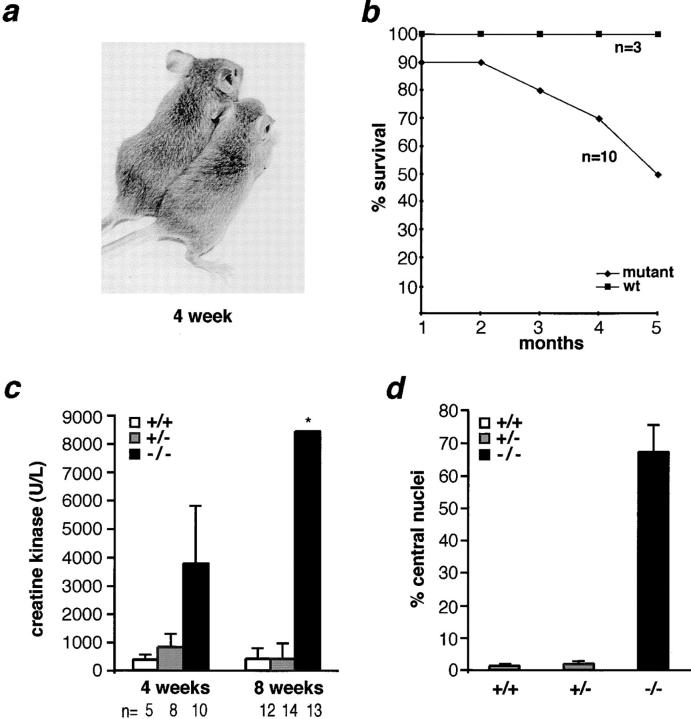Figure 2.
Characterization of mice lacking γ-sarcoglycan. (a) Left, wild-type gsg +/+ mouse; right, gsg −/− mouse displaying stunted growth and abnormal stance. (b) Survival curve for gsg −/− vs. wild-type gsg +/+ littermates. By 4–5 mo of age, nearly 50% of gsg −/− animals die. (c) Serum creatine kinase (CK) levels of wild-type gsg +/+ (white), heterozygous gsg +/− (gray), and mutant gsg −/− (black) animals at 4 and 8 wk of age. At 4 wk, the mean serum CK was elevated ∼10× that seen in wild-type mice, and at 8 wk the mean CK was elevated more than 40× that seen in wild-type mice. The standard deviation (*) of serum CK values in 8-wk-old mice was ±22,830; 4/13 mice in this group had serum CK values of 17,750, 28,400, 33,400, and 80,500 U/liter (normal range 68– 1070 U/liter). (d) The percentage of myofibers with centrally placed nuclei is greatly increased in gsg −/−mice.

